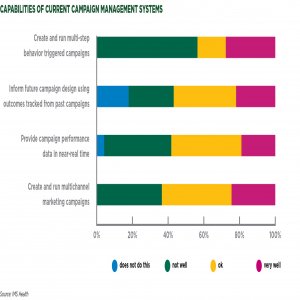Cultivating Entrepreneurship in Gene Therapy

STORY INLINE POST
Q: What opportunities and barriers did you identify when you founded Global Biotherapeutics?
A: When we established the company in 2009, we identified several gaps in the field of gene therapy, such as finding the right way to deliver genes to specific cells or organs. Today, it is still difficult to deliver an insulin gene to a diabetic patient without any risk, as is the case when delivering clotting-factor genes to patients suffering from hemophilia. These problems have existed in the field for the last 20 years, and my partners and I realized the technology we are generating is the ideal solution that also represents a commercial opportunity. Our gene delivery platform will revolutionize the field of gene therapy and may finally allow patients to realize the potential of gene therapy to treat genetic diseases and chronic illnesses. Developing a new idea and then pitching it to the global market can be challenging, especially in countries like Mexico where a culture of entrepreneurship is in its infancy. We are interested in transferring this technology to big pharmaceutical companies. We have overcome many barriers, since opening an office with a laboratory infrastructure, having the permits to import our reagents, and obtaining corresponding licenses are complex processes in Mexico. CONACYT has provided considerable support through various funding programs, and has been patient in understanding the potential of the technology that we are developing. Through identifying the fact that Mexico’s government had become interested in stimulating alternate means of wealth creation and economic growth, with knowledge and technology at the core of this trend, we are seeking to shift the balance from Mexico’s main economic drivers like oil, tourism, and mining, towards innovation in the biomedical field. GBT’s biggest priority for 2015 is conducting safety and efficacy studies for type 1 diabetes and hemophilia A on large animal species.
Q: How close are you from transferring or licensing this gene therapy delivery platform?
A: So far, we have successfully proven that our gene delivery technology is safe and effective in rodent and porcine models using reporter genes, we have developed novel laparoscopic surgical devices for the future implementation of GBTs technology in humans and we have initiated proof of principle therapeutic experiments for type 1 diabetes and hemophilia A, with extremely encouraging results. We are aiming at completing proof of principle therapeutic and toxicological data sets on large species by late 2016. Furthermore, we have begun to draw regulatory road maps towards phase one clinical trials and we are aiming at Investigational New Drug (IND) filings with the FDA by early 2017, as well as filing with the European Medicines Agency (EMA). Due to the length of the licensing process, scientists in a research center, university, or national institute usually request government funding, but we chose the alternative route of establishing a startup. Startup companies in developed countries have three possible funding options: angel investors, venture capital firms and national funding sources which invest in startups, or private investment from family and friends. Global Biotherapeutics is currently traveling through the valley of death. We have not sold our technology yet because our patents have just been published, and we need to have a well-articulated intellectual property strategy to attract big companies. We recently submitted our first paper on our technology to the European Society of Gene and Cell Therapy (ESGCT), with another paper appearing in the journal Molecular Therapy. We also presented the technology in Washington, and are willing to license this technology to major companies, but major pharmaceutical companies generally only begin to show interest after IND filings are complete.
Q: What diseases are you aiming to tackle?
A: Since GBT has developed a platform technology through which several pathological conditions could be treated, several criteria are taken into consideration when selecting GBTs therapeutic programs. We are currently focusing on developing three therapeutic programs to combat diabetes, hemophilia and cancer respectively, a program specifically aimed at areas with unmet medical needs. We applied for a grant in order to develop a solution for diabetes type I, and as the government has a vested interest in developing solutions, the proposal was granted. We chose hemophilia because it is a pathology involving just one damaged gene that could be easily repaired using gene therapy. In terms of cancer treatment, our technology is robust and extremely safe, and our laboratory results suggest it may well be useful for solid tumors. For investment purposes, companies require promising data, which we have presented for our gene therapy technology. Meanwhile, we are still generating data on biodistribution, toxicology, safety, and efficacy which are the most important elements to evaluate in gene therapy.
Q: How do you ensure your platform is safe?
A: While some current gene therapy techniques encounter toxicology problems, such as altering hepatic biomarkers and other side-effects, our platform does not. Insulin to treat type 1 diabetes or factor VIII to treat type A hemophilia, for example, both consist of naturally-occurring endogenous proteins encoded within human DNA structures, meaning that the process of drug discovery dramatically changed with the arrival of biotechnology. We deeply understand the molecules in terms of their structure, their physiology, their pharmacological and toxicological profiles, and their therapeutic dose windows. In the field of gene therapy, the challenge has been developing processes to deliver these DNA sequences that encode the therapeutic protein to a target organ in a manner that is safe, controllable, and yields sufficient therapeutic protein to cure the condition. The fact that GBT’s technology meets all these requirements displays that, far from creating risk, we can greatly reduce the danger involved in hepatic-based gene therapy. We complement these processes with extensive in vitro tests that provide information about how cells and tissues react in the presence of this therapy, as well as employing stringent risk management techniques, such as applying scientific rigor, quality control in terms of personnel and affiliates and incorporating any necessary development points.
Q: In what way are COFEPRIS regulations conducive to launching gene therapy technologies within the Mexican market?
A: Mexico is a relatively young country, which is developing rapidly, meaning that terms like innovation, scientific entrepreneurship, and research and development remain relatively new concepts in our collective consciousness. Our regulatory body COFEPRIS must make a concerted effort to maintain the global pace and must prioritize the implementation of adequate guidelines for new technologies like gene therapy, since enforcing these rules and guidelines is at the core of acquiring global credibility. Given our geographical proximity to the US, Mexico has the potential to become a major strategic hub of pharmaceutical development, and although COFEPRIS has made strides in terms of regulatory framework, there are still no regulatory guidelines for gene therapy in the country. As a result, we contracted a European firm to draft GBT’s regulatory protocols for our various therapeutic programs, in compliance with both FDA and EMA requirements, and with this feedback we will subsequently work in collaboration with COFEPRIS, with a view to implementing standard practices for phase one clinical trial authorization in Mexico. We have also held several promising meetings with the heads of the National Institute of Medical Sciences and Nutrition Salvador Zubiran (INCMNSZ) and the National Institute of Oncology (INCAN), discussing the potential for introducing phase one clinical trials in Mexico.
Q: What partnerships have you established with universities, research centers and other companies to advance your technology?
A: So far we have worked in collaboration with many world-class prestigious scientific institutions in Mexico to help us develop our technology, such as CINVESTAV’s Pharmacology Department, UNAM’s Instituto de Química, UNAM’s Instituto de Biotecnología and UAM Xochimilco, as well as organizations like the National Institute of Genomic Medicine, National Institute of Pediatrics, and the INCMNSZ. We view these interactions as historically fundamental in Mexico’s transition to an economy of knowledge and these affiliations earn us additional credibility within the industry. From these inter-institutional collaborations, not only do our institutions learn the complex process of biomedical pharmaceutical innovation, we also benefit financially from CONACYT’s funds.
Q: What problems have you experienced in presenting the technology to major pharmaceutical companies?
A: Regenerative medicine is divided into two branches: gene therapy and stem cell therapy. We are actively seeking partners within the pharmaceutical industry that might be interested in GBT’s hepatic vector delivery platform. Companies such as Sanofi, GSK, AstraZeneca, Novartis, Novo Nordisk, and Baxter have expressed interest in the emerging biomedical field of regenerative medicine and have made substantial investments with other startup companies. We have also tried to collaborate with Mexican pharmaceutical companies, but efforts have been relatively unsuccessful since Mexican pharmaceutical companies are comfortable within the domestic market and do not view innovation as a driver for growth. Mexican pharmaceutical companies overlook the concept of innovation as a central element of corporate competitiveness and survival generally perceiving R&D as a luxury rather than a vital investment. The innovation process iis time consuming and expensive, yet the rewards in global markets are hugely attractive and we want to be the pioneer that positions Mexico as a nation with the talent, the passion, the drive, the focus, the perseverance and the knowledge to innovate and compete on a global scale.























